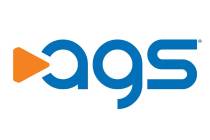Dread copay? It could be thing of past
That $20 copay you shell out at the doctor's office may soon be history.
Employers facing ever-growing bills for health care benefits are turning to insurance plans with higher out-of-pocket costs for employees.
But before you complain about the expense, consider that these plans, called consumer-driven health plans, could save everyone money in the long run. That's because consumer-driven coverage puts you in control of how - and how much - you spend on care. Consumers who spend their own money, in theory at least, are likelier to shop around for the best price.
"It's the idea of having a true free market, and getting folks more engaged in shopping for health care," said Mike Murphy, president and general manager of Anthem Blue Cross and Blue Shield in Nevada, which has about 275,000 members. "People get engaged in understanding costs and quality trade-offs. The more dollars you put in someone's hands, the more they get involved in their health care decisions."
Added David Dahan, CEO of local insurance brokerage Orgill/Singer: "The employee becomes an active health care consumer rather than being passive about health care. When it's coming out of your pocket, you become more concerned. You become more of a shopper."
Nevada's major insurers don't keep state-level numbers, but they report a big jump nationwide in enrollment in consumer-driven health plans.
At Anthem, enrollment in the plans rose 23.7 percent from 2009 to 2011, to nearly 2.6 million out of 33.7 million members. Half of employers offer or are considering the plans, Murphy said.
A quarter of all UnitedHealth individual plans come with health savings accounts. More than 4.5 million of the company's 70 million customers are in consumer-driven plans. The insurer has about 715,000 members in Nevada.
"We continue to see strong growth in our (consumer-driven) plans as employers continue to increase their focus on driving consumer engagement in their health care decisions as well as their own health care costs," said UnitedHealth spokeswoman Cheryl Randolph.
But being involved in your health care decisions means comparison shopping. That's not easy: Every doctor or hospital charges different rates for different procedures, and many of them can't give a straight answer on costs without knowing exactly what coverage you have.
"It's not like going out and buying a pair of shoes," said Dave Allazetta, vice president of sales and marketing for UnitedHealth Care of Nevada.
Plus, consumer-driven plans have higher deductibles, making them impractical for some consumers.
Determining whether the plans are right for you, or how to use a policy once you have it, requires understanding how consumer-driven insurance works.
PLANS NOT IDEAL FOR EVERYONE
Consumer-driven health plans pair high deductibles - most Anthem savings-related deductibles average $2,000 to $3,000 - with savings accounts to cover out-of-pocket costs. The accounts work like a 401(k), padding balances with pre-tax income.
With a health-savings account, individuals can take their accounts with them when they change jobs or retire. A second type of consumer-driven plan, the health reimbursement account, is employer-funded and doesn't follow the employee.
Individuals can sock away as much as $3,250 a year in a plan account; families can save $6,450. Accounts are usually held as cash or in money market funds, with fixed or variable interest rates. Some accounts also have management fees that may be waived on higher balances.
In practice, both plans work the same way: If a patient who hasn't met his deductible needs a procedure, he can make a tax-free withdrawal to cover it. Most consumer-driven plans cover 100 percent of health expenses once patients reach their deductible, Dahan said.
The plans have advantages. High deductibles mean a 10 percent to 20 percent lower premium, Dahan said. If they stay healthy, consumers can amass a nest egg to pay for care after they retire. Comparison-shopping also means more affordable health care for everybody: A February study by business-research company Thomson Reuters found that shopping around for health care could save the nation as much as $36 billion a year in medical costs.
The plans aren't for everyone, though. High deductibles could leave consumers who have expensive chronic illnesses with thousands of dollars in out-of-pocket costs. It may also be tough for some people to save enough to cover deductibles.
The bottom line? Consumer-driven plans are best for healthy people who don't want to pay higher premiums for care they may never use.
CHANCE TO DO SOME RESEARCH
Healthy or not, it's increasingly likely that a consumer-driven health plan is headed your way. Here are some ways to make the plans work for you.
Start with cost transparency.
Most big insurers, including Anthem, UnitedHealth and Aetna, have websites that let customers compare the cost and quality of doctors, hospitals and procedures, Dahan said. They include doctors' fee schedules, your insurer's contracted rate and outcomes. Anthem's Care Comparison program, for example, details more than 100 procedures ranging from knee replacements to colonoscopies. Information includes how often a provider performs a procedure, complication and mortality rates, average hospital stay and costs for everything from the lab to the recovery room.
At UnitedHealth's website, customers can find doctor ratings, outcomes and national and regional costs.
"People can see if it makes sense to go to a teaching hospital for treatment as opposed to going through a local physicians' network," Allazetta said.
If you're having trouble getting started, check with your insurer or employer's human resources department for tips on where to find information, Murphy suggested.
Even if you don't have a consumer-driven plan, you can check out those statistics now and begin comparison shopping. Dahan recommends dipping your toe in by checking on high-cost services such as hospitalizations or MRIs.
Dahan also suggested employers start slowly and build up to a higher deductible. Experiment with a deductible of $1,500, and once employees see how much money they save on premiums, they may be interested in bumping up the deductible to save more. About 20 percent of employees whose companies offer consumer-driven policies opt in immediately; the rest need some convincing. It also helps to emphasize how the plans can help put employees in control of their health care decisions.
"Most of us are passive consumers. We enjoy paying that $10 copay and not having any idea what anything costs," Dahan said. "That attitude has an expense to it, and unfortunately, that expense is getting higher. It's a luxury to not care about cost, but the days of being passive are behind us. The consumer has a unique opportunity right now. HSAs are a way to take charge."
Contact reporter Jennifer Robison at jrobison@reviewjournal.com or 702-380-4512. Follow @J_Robison1 on Twitter.























